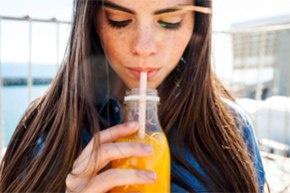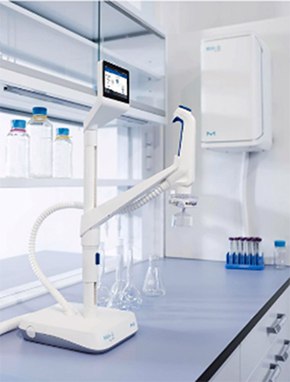Ultrapure Water for Food and Beverage Analysis by Ion Chromatography
Merina Corpinot, PhD1, Estelle Riche, PhD2, Beatrice Frocrain1, Stephane Mabic, PhD2
1R&D, Lab Water Solutions, Merck, Guyancourt, France, 2Marketing, Lab Water Solutions, Merck, Guyancourt, France
Section Overview
- Analyzing Sugars to Monitor Food Safety & Food Authenticity
- Ion Chromatography in Quality Assurance & Quality Control of Food and Beverages
- Suitability of Ultrapure Water for Ion Chromatography Analysis of Food and Beverages
- Conclusion: Milli-Q® Ultrapure Water Meets the Needs of Food and Beverage Ion Chromatography Analyses
- Products
- References
Analyzing Sugars to Monitor Food Safety & Food Authenticity

With the globalization of our food supply, food safety and quality have become great concerns for both consumers and regulatory bodies. Sugars and organic acids, for example, influence the organoleptic properties of many products. They must be identified and analyzed in raw ingredients and throughout the production process, all the way to final quality control and nutritional labeling. In addition, profiling the sugar makeup of foods and identifying additives is a useful way to assess food authenticity and detect adulteration.
Ion Chromatography in Quality Assurance & Quality Control of Food and Beverages
One of the main challenges in food and beverage testing is detecting trace amounts of analytes in complex matrices. Ion chromatography (IC) is increasingly used in food and beverage Quality Assurance/Quality Control (QA/QC) laboratories since it is a versatile and sensitive analytical method that allows the simultaneous analysis of a wide array of compounds.
Water is a crucial reagent in the IC workflow as it is required in many steps, including the preparation of samples, standards, blanks and eluents. To ensure accurate and reliable IC analysis, the water used should be of the highest quality level and be free of the analytes of interest. Any contaminant present in the water may impact results and should be avoided.
Suitability of Ultrapure Water for Ion Chromatography Analysis of Food and Beverages
This study examines the suitability of ultrapure water obtained from a Milli-Q® IQ 7000 ultrapure water purification system for the IC analysis of sugars and small organic acids commonly assessed in food and beverage testing labs.
Quantification of Sugars in Ultrapure Water
Sugars are important for human nutrition and must be analyzed for nutritional labeling and to monitor product quality. Lactose is carefully monitored in many products, especially those claiming to be lactose-free. Sugars are also good indicators of the flavor of drinks, such as beer or coffee.
High-performance anion-exchange chromatography with pulsed amperometric detection (HPAE-PAD) is an increasingly used IC method that allows the direct and sensitive quantification of a wide range of carbohydrates at low nanomolar levels without the need for derivatization.1,2
Obtaining reliable, consistent and accurate results requires water that is free of the analytes of interest. Using HPAE-PAD, freshly produced ultrapure water obtained from the Milli-Q® IQ 7000 system was analyzed for the presence of common monosaccharides (fructose, glucose) and disaccharides (sucrose, maltose, lactose). Table 1 shows that the ultrapure water contained less than the method’s quantification limit (1 mg/L) of each of the sugars. This water is therefore suitable to be used in sample and eluent preparation, as well as standard preparation for sugar analyses.
Quantification of Small Organic Acids in Ultrapure Water
Small organic acids influence the taste and aroma of foods and drinks. These acids may be present naturally, or may be added in order to enhance a product’s tartness and acidity, stabilize the pH, or act as a preservative. Tartaric, citric and malic acids are closely monitored in wine, beer and fruit juices. They have organoleptic properties and are good indicators of quality. Acetate and lactate, on the other hand, are often used as indicators of microbiological spoilage, for example in fruit juices. In soft drinks, citrate and malate are monitored as they act as acidifiers or flavor enhancers.
We analyzed freshly produced ultrapure water dispensed from a Milli-Q® IQ 7000 water system for the presence of the above organic acids by IC with suppressed conductivity detection. Table 2 shows that the ultrapure water did not contain measurable ion concentrations of citric, malic, tartaric or lactic acid, as determined by an independent laboratory. Acetic and formic acid levels were measured in-house after pre-concentration. Results showed that their ion concentrations were also below the method’s limit of quantification (LOQ). Ultrapure water from a Milli-Q® IQ 7000 system is therefore suitable for use in sample preparation and organic acid analysis of foods and beverages by IC.
Experimental Section
Samples tested
Ultrapure water dispensed from a Milli-Q® IQ 7000 water purification system (Resistivity: 18.2 MΩ.cm at 25 °C, TOC < 5 ppb) fitted with a 0.22 µm final filter (Millipak®) and fed by an Elix® electrodeionization (EDI)-based pretreatment system similar to the Milli-Q® IX pure water system.
Analysis of sugars
- Glucose, fructose, sucrose, maltose and lactose were analyzed by an independent, accredited (COFRAC) laboratory.
- Instrument: Thermo Scientific Dionex™ ICS-5000+
- Analytical Column: CarboPac™ PA1, 4 x 250 mm
- Eluent: NaOH gradient (A: 50 mM of NaOH and B: 100 mM NaOH, both prepared with water from a Milli-Q® ultrapure water system)
- Detection: Pulsed amperometry
Analysis of small organic acids
1. Citric, malic, tartaric, and lactic acids were analyzed by an independent accredited (COFRAC) laboratory.
- Instrument: Thermo Scientific Dionex™ ICS-5000+
- Analytical column: IonPac™ AS 11-HC
- Eluent: NaOH gradient 1 to 60 mM (NaOH solutions prepared with water from a Milli-Q® ultrapure water system)
- Detection: Suppressed conductivity
2. Acetic and formic acids were analyzed (after pre-concentration) in our R&D laboratories.
- Instrument: Thermo Scientific Dionex™ ICS-3000
- Columns: Anion concentrator: IonPac™ UTAC-ULP1 5 x 23 mm; Guard column: IonPac™ AG19 2 x 50 mm; Analytical column: IonPac™ AS19 2 x 250 mm
- Samples volume: 100 mL
- Standards: TraceCERT® standards
- Eluent: KOH gradient: 1 to 35 mM KOH from 0 to 20 min; 35 mM from 20 to 25 min; 35 to 1 mM from 25 to 25.1 min; 1 mM from 25.1 to 30 min. Eluent source: EG40 with KOH cartridge and ultrapure water by direct-feed from an ICW-3000™ water purification system; Flow rate: 0.25 mL/min
- Detection: Suppressed conductivity; Eluent suppressor: ASRS® Ultra II 2 mm
Conclusion: Milli-Q® Ultrapure Water Meets the Needs of Food and Beverage Ion Chromatography Analyses
When analyzing foods or beverages, high quality reagents should be used throughout the analytical workflow, from the preparation of standards and samples to analysis, as the presence of contaminants can affect results. In this study, ultrapure water dispensed from a Milli-Q® IQ 7000 lab water system was shown to be effectively free of commonly analyzed sugars and organic acids, making this water ideal for the IC analysis of food and beverage samples.
Ultrapure water is also free of other contaminants, such as inorganic ions, bacteria and particles, that may affect the performance of the analytical instrument itself. Instrument manufacturers have observed that the HPAE-PAD chromatographic technique is more sensitive to certain water contaminants compared with other analytical techniques.3 For example, if the eluent is prepared using bacteria-contaminated water, high background signals may reduce the peak areas of the analytes of interest. Furthermore, extra peaks may be observed if such water is used to prepare samples for this method. For this reason, when dispensing ultrapure water from a Milli-Q® ultrapure water system, the Millipak® 0.22 μm final filter is highly recommended to remove these critical contaminants.
This study demonstrates that ultrapure water freshly produced by a Milli-Q® IQ 7000 water purification system is suitable for IC analysis of sugars and small organic acids. A Milli-Q® IQ 7000 ultrapure water purification system can be fed by a Milli-Q® IX pure water system. Alternatively, it is possible to use the Milli-Q® IQ 7003/05/10/15 all-in-one pure and ultrapure system, which also dispenses ultrapure water suitable for IC analysis using tap water as its feed source.

The Milli-Q® IQ 7000 system produces ultrapure water suitable for ion chromatography.
Materials
References
To continue reading please sign in or create an account.
Don't Have An Account?